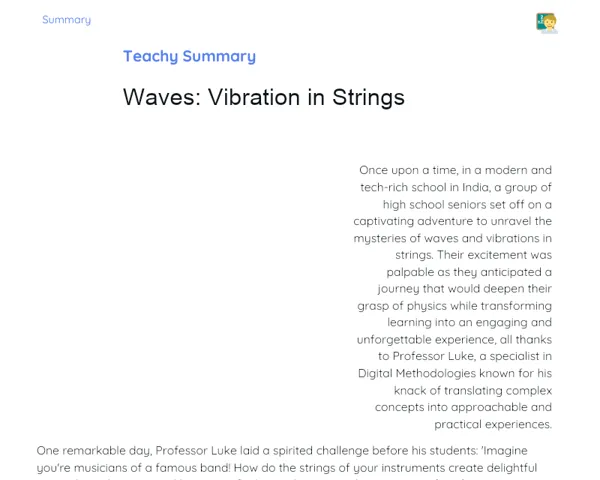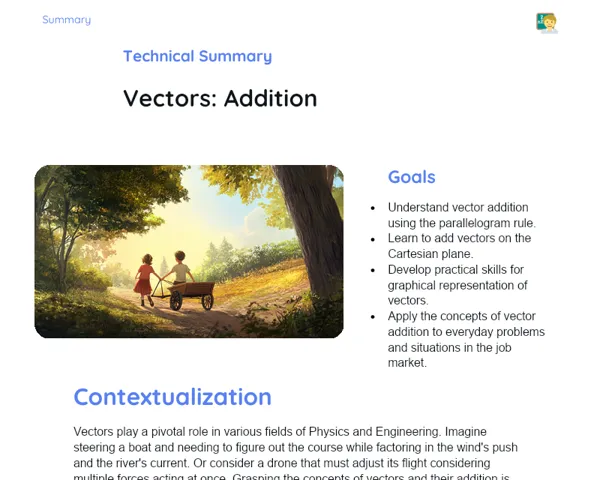Objectives
1. Identify and describe the necessary conditions for the conservation of energy in fluids.
2. Apply Bernoulli's principle to analyze and explain how the velocity of a fluid, pressure, and potential energy are interrelated.
Contextualization
Did you know that Bernoulli's principle, discovered by Daniel Bernoulli in the 18th century, goes beyond just physics books? It plays a crucial role in designing airplanes, race cars, and even how certain games function! This principle illustrates that as the velocity of a fluid increases, its pressure decreases. For instance, when you stretch your hand out of a moving car window, the force lifting your hand is a perfect real-world example of Bernoulli's principle in action!
Important Topics
Relationship Between Velocity and Pressure
Bernoulli's principle establishes an inversely proportional relationship between a fluid's velocity and the pressure it applies. This means that in a moving fluid, a higher velocity correlates with lower pressure. Grasping this concept is key to understanding various phenomena, like how airplanes fly and how ventilation systems operate.
-
Pressure and velocity are inversely proportional: As the fluid's velocity ramps up, the pressure drops. This is vital for aircraft design, where wings are crafted to create a pressure difference that yields lift.
-
Practical applications: Bernoulli's principle finds use in many sectors, ranging from medicine (for instance, in the Venturi effect for oxygen inhalation) to engineering (as seen in HVAC and hydraulic systems).
-
Home experiment: You can easily demonstrate Bernoulli's principle with a hairdryer and a ping pong ball. Observe how the ball floats in the air due to the pressure difference created by the airflow.
Conservation of Energy in Fluids
Another significant aspect of Bernoulli's principle is the conservation of energy in fluids. It asserts that the total energy within a fluid (the combination of kinetic energy and gravitational potential energy) remains constant when friction and external energy sources are absent.
-
Kinetic and gravitational potential energy: The kinetic energy grows with the fluid's velocity, while the gravitational potential energy shifts because of height differences. Together, these energies maintain a constant balance.
-
Applications in engineering: This law is essential for the design of pipes and duct systems, where minimizing energy loss due to friction ensures efficient flow.
-
Suggested experiment: Use two plastic bottles connected by a tube, fill one with water, and watch how varying fluid heights impact the velocity and pressure of flow in the tube.
Practical Applications of Bernoulli's Principle
While it's important to comprehend the theoretical aspects, understanding how Bernoulli's principle is utilized in everyday technology is key. Examples include irrigation systems, vehicle aerodynamics, and musical instruments.
-
Aerodynamics: Aircraft wings are crafted to create pressure differences that keep them aloft, fundamentally based on Bernoulli's principle.
-
Musical instruments: The sound produced by wind instruments like flutes comes from air travelling through a tube, where Bernoulli’s principle contributes to sound generation.
-
Technological challenge: For a project, students can work on enhancing the design of a small air-powered vehicle by applying Bernoulli's principles to improve its efficiency and speed.
Key Terms
-
Bernoulli's Principle: Asserts that in a moving fluid, pressure is inversely proportional to velocity.
-
Kinetic Energy: The energy concerning an object's motion, in fluid terms, related to the fluid's speed.
-
Gravitational Potential Energy: The energy an object possesses due to its position in a gravitational field, which is significant for fluids moving at varying heights.
For Reflection
-
How can Bernoulli's principle help explain the functionality of a water sprayer?
-
In what ways could height variations in an irrigation system impact water pressure and flow based on Bernoulli's principle?
-
Why is mastering energy conservation in fluids vital for developing sustainable technologies?
Important Conclusions
-
We delved into the captivating Bernoulli's Principle, which intricately links the pressure, velocity, and height of fluids, influencing numerous phenomena, from aircraft flight to efficient irrigation systems.
-
We examined how Bernoulli's principle finds application in our daily technology, underscoring its importance and notable influence in fields like engineering, medicine, and even music.
-
We emphasized the significance of energy conservation in fluids, a fundamental idea that assists us in understanding the distribution and constancy of a fluid's total energy under ideal conditions.
To Exercise Knowledge
- Create a model airplane wing from recyclable materials and test how varying shapes impact your model's 'flight' based on Bernoulli's Principle. 2. Construct a simple device to showcase Bernoulli's principle using a plastic bottle and a straw, observing how air pressure can move an object. 3. Write a brief report explaining the application of Bernoulli's principle in an automatic irrigation system and how this supports water conservation.
Challenge
Bernoulli's Innovator Challenge: Design an air-powered vehicle that can travel the farthest on an incline, utilizing Bernoulli's principles to refine the design and efficiency of the vehicle. Document your design process, trials, and outcomes in a creative video!
Study Tips
-
Watch videos demonstrating Bernoulli's principle in action, such as science experiments on educational channels, to visualize the discussed concepts better.
-
Experiment with fluid simulation apps that enable interaction and parameter modification to witness how Bernoulli's principle operates in different contexts.
-
Share with your classmates or family scenarios where Bernoulli's principle might be applied in daily life, like cooking, driving, or water sports to enhance your understanding and its practical implications.



